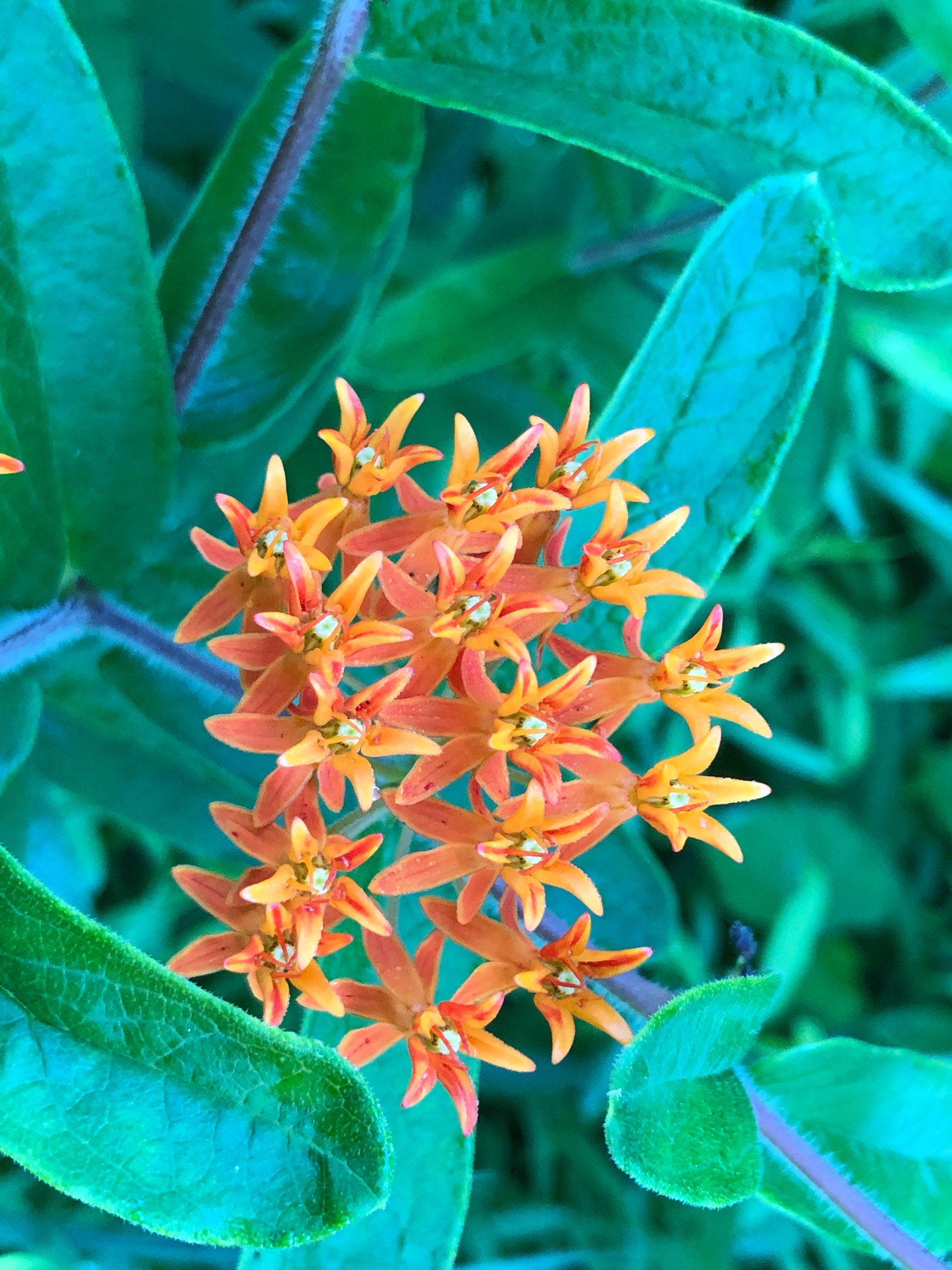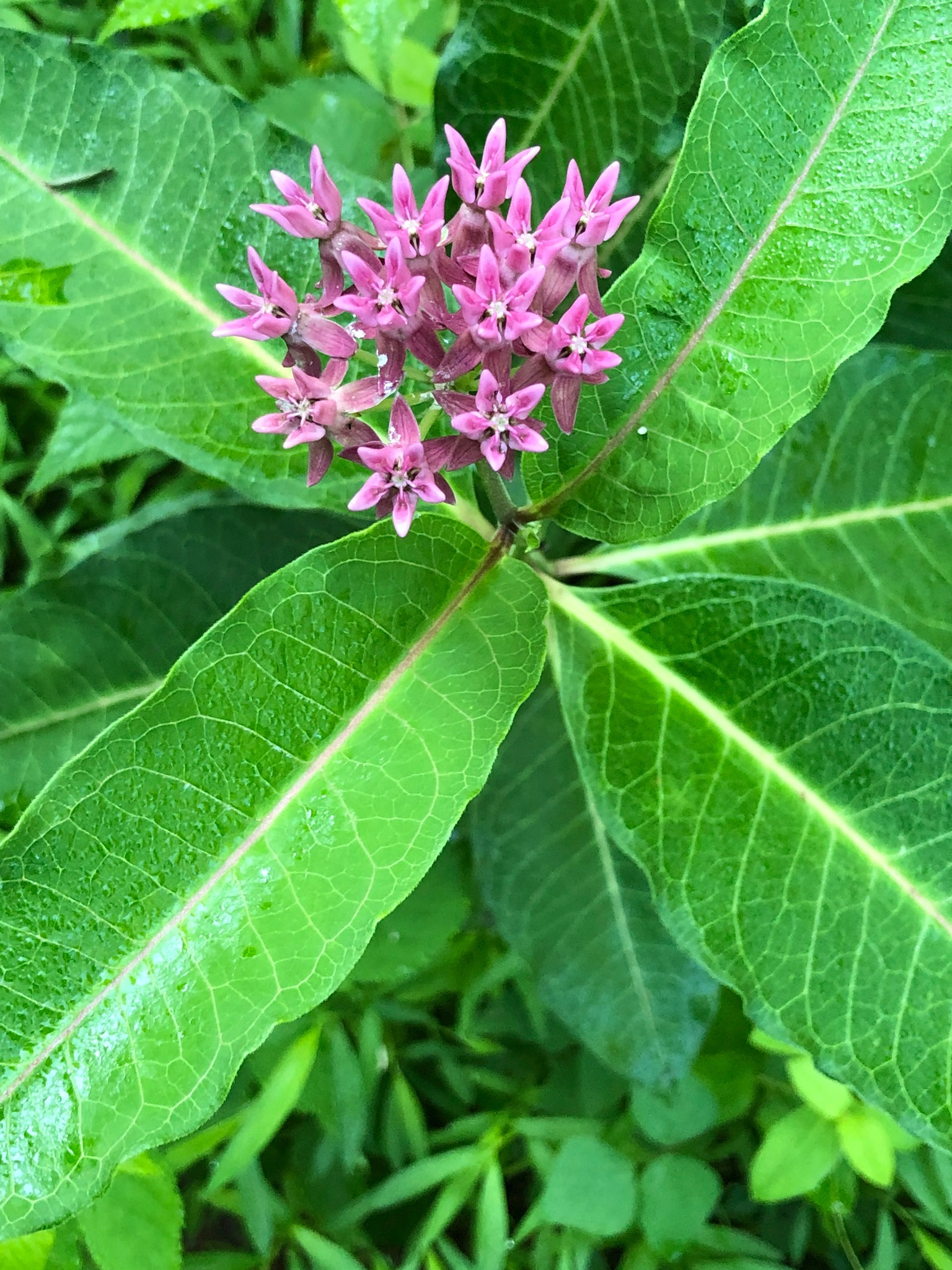Crow’s Nest: Natural Fireworks
By Daniel Barringer, Preserve Manager.

Many of us won’t be watching firework displays in person this year due to Covid-19—but there are alternatives! Sunrise and sunset each occur daily and some of them are spectacular. The preserve is open from dawn until dusk and if you’re an early riser this is a good place to see them. And then you can beat the heat (it was glorious this morning, as it is most summer mornings) and have the preserve almost to yourself. I am fortunate to be out walking dogs at this hour and we all enjoy it together (though my enjoyment is primarily visual and aural—the wood thrush!—and theirs is mainly olfactory, except when they spot a robin or a rabbit, though our dogs are always leashed.)

Additionally we have some pretty wonderful native wildflowers in bloom right now. Above, Canada lily (Lilium canadense). Historically some of these grew along the Creek Trail, but I haven’t seen those this year. But there are still a couple blooming on the trails that lead from the visitor center barn to the old swimming hole in French Creek, near the red trail that turns off of the Creek Trail and leads back into the woods behind the visitor center (feel free to contact us if you want more details on where to find them).

The members of the dogbane family that are the showcase of exploding blooms can be found here and there at the preserve, but for the best show, you need to make it up to our savanna. Take the Creek Trail to where it turns into the farm fields, cross the “spring ditch” on the footbridge and hike as though you were going to the Chief’s Grove. But when you get up onto the high ground in the farm fields (hike to the kestrel box and turn right) you will pick up the purple trail, the “Hopewell Trail”—which eventually leads to Hopewell Furnace National Historic Site. But you’re not going that far—follow the trail past another farm field, cross a small stream, and find yourself exploring our “northern meadows” which includes an area we are managing as a savanna. We left many trees in this meadow and mow between them once a year and about every five years we apply prescribed fire here. The milkweeds and butterfly weed have responded really well to this management. Above, common milkweed, Asclepias syriaca.

Above and below here, two pictures of butterfly weed, Asclepias tuberosa. It’s not at all a weed, not an aggressive spreader, but a highlight here and there in gardens and meadows. And don’t forget, the flowers are just the start—these wildflowers are amazing at attracting showy butterflies and other interesting insects.


And above and below here, swamp milkweed, Asclepias incarnata var. pulchra. All of these are easily seen from the path. I took these photos this morning while I was pruning along the trail and weeding the invasive plant pale swallowwort (Cynanchum nigrum—not shown here). Let us know if you need directions to these plants—we hope you enjoy them!

